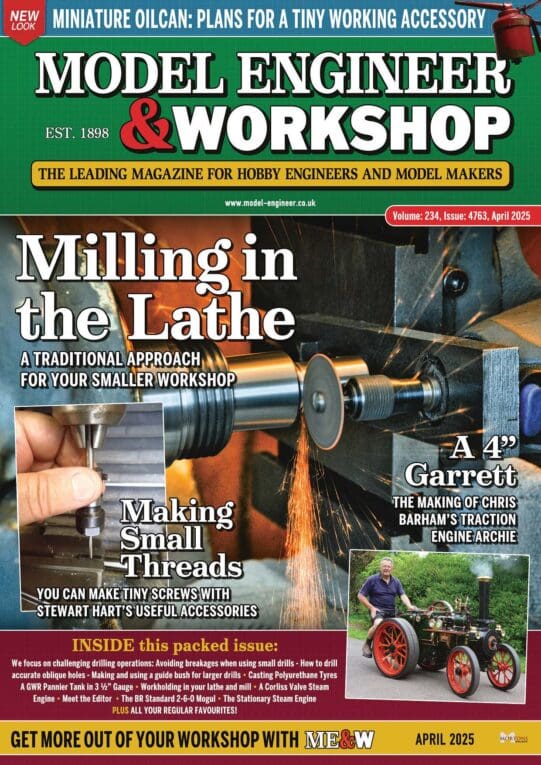I’ve recently had the need to make some parts on my CNC mill from 316 stainless steel. This has been rather a steep learning curve, so I thought I’d write a few notes on what I have learnt; the hard way of course.
The parts concerned are from 1.5mm 316 stainless steel sheet, and have complex outlines and internal cutouts. I had three off, of two parts, to make, and didn’t fancy doing it on a manual mill. The S/S used is 316 because, after machining and bending, the parts need welding.
I have turned a fair amount of 303 and 316 stainless steel with few problems and have always got an excellent finish using carbide insert tooling. I have done very little milling of stainless steel and no CNC milling of it, until now.
I used two cutters; a 6mm three flute centre cutting uncoated endmill, and a 2mm four flute centre cutting TiALN coated endmill, both from Garr Tool.
Looking up Machinery’s Handbook gave a surface speed of 200fpm for carbide in 316. Being cautious, so I thought, I downgraded that to 120fpm, corresponding to 2000rpm for the 6mm cutter. Choosing a chipload per tooth of 0.05mm gave a feedrate of 300mm/min. After a couple of broken cutters and another one worn out, I did what I should have done in the first place; put the kettle on and then look up the Garr Tool machining data. For 316 they give 20-35m/min and a feedrate of 0.01-0.025mm/tooth for a 6mm cutter. I chose 22.6m/min (1200rpm) and a chipload 0.025mm/tooth for a feedrate of 90mm/min. What a difference! The cutter ploughed through the cuts slowly but smoothly; yippee!
Figures for the 2mm cutter were 3500rpm and 70mm/min feedrate. That seems a very high rpm, but the diameter is three times smaller, so for the same surface speed the rpm needs to be three times higher. The feedrate equates to a chipload 0.005mm/tooth, at the lower end of the manufacturers recommendations.
I have added a few pictures in an album showing the parts and few snapshots of the machining in progress.
A few other random snippets. I used flood coolant at all times, mainly to flush away the swarf. The depth of cut with the 6mm cutter was 1.7mm, to ensure complete break through. With the 2mm cutter the same total depth was achieved in four passes, each of 0.45mm. Typically, despite breaking several 6mm cutters, I didn’t break a single 2mm one. The aluminium subplate is sacrificial. Better to cut into it than the table! Once it gets too badly mangled I’ll either recycle it or give it a facing cut. It’s scrap anyway; it was cut from a larger sheet that, due to a brain fart on my part, was ordered to the wrong size for a previous project. In retrospect I am amazed that the 6mm cutter actually worked with the original speeds and feeds; it just wasn’t sustainable for even one part. The local professional tool shop sold me some 6mm cutters with a small radius (0.3mm) on the tips as specially for stainless steel. I haven’t tried them, but can see that it makes sense, as the cutters wear initially on the sharp tips; if you don’t break them first of course!
One other thing, I also mangled a HSS drill on the manual mill too, by hesitating, and then getting it red hot trying to finish the hole. It was a vivid way to relearn the lesson of never, ever let the tool dwell when machining stainless steel. It’ll work harden before you know it. Then only carbide will touch it, if you’re lucky.
I hope this is of use to somebody, if only to prevent wallet damage. Mind is still sulking.
Regards,
Andrew
PS: Sorry about the mixed units, that’s just the way it goes, and I’m comfortable speaking both imperial and metric so it doesn’t bother me.
Edited By Andrew Johnston on 14/02/2011 22:04:37
Anonymous.





